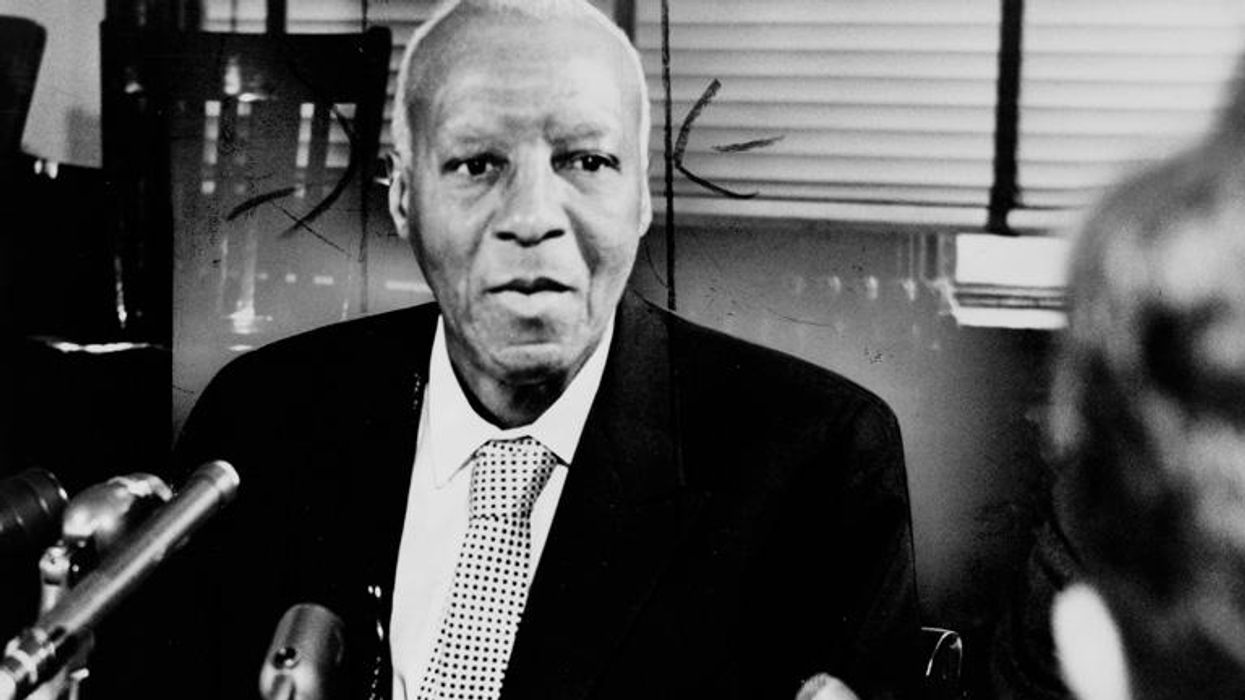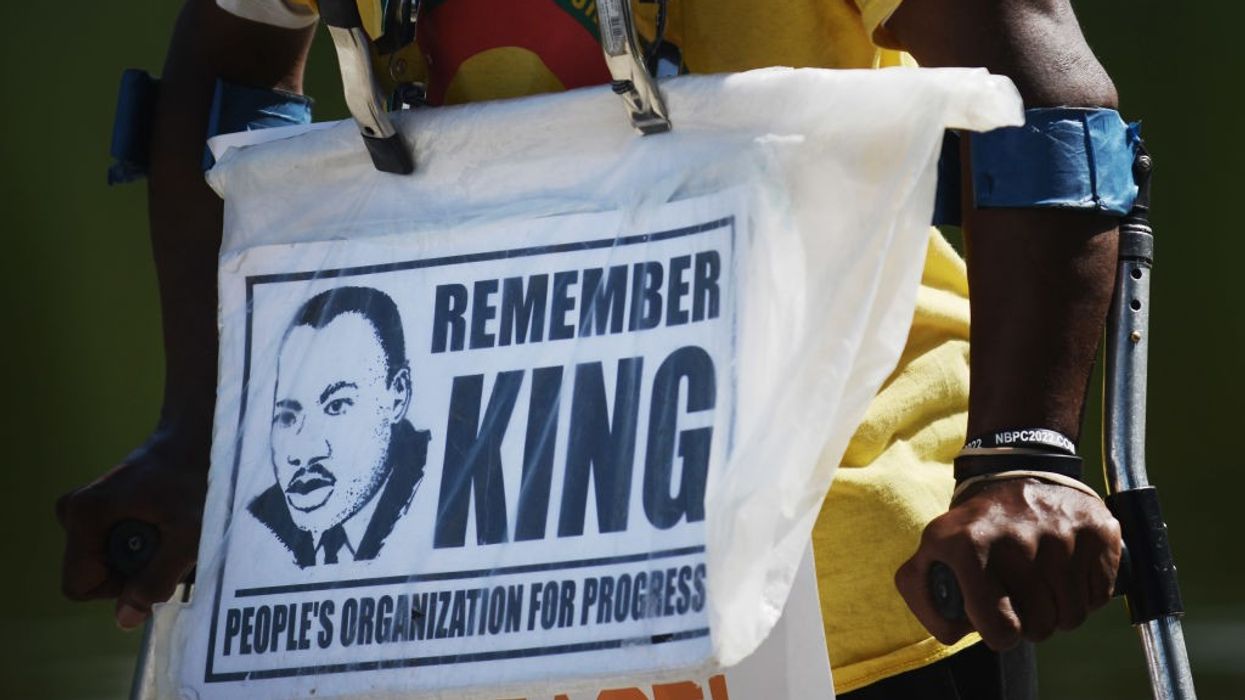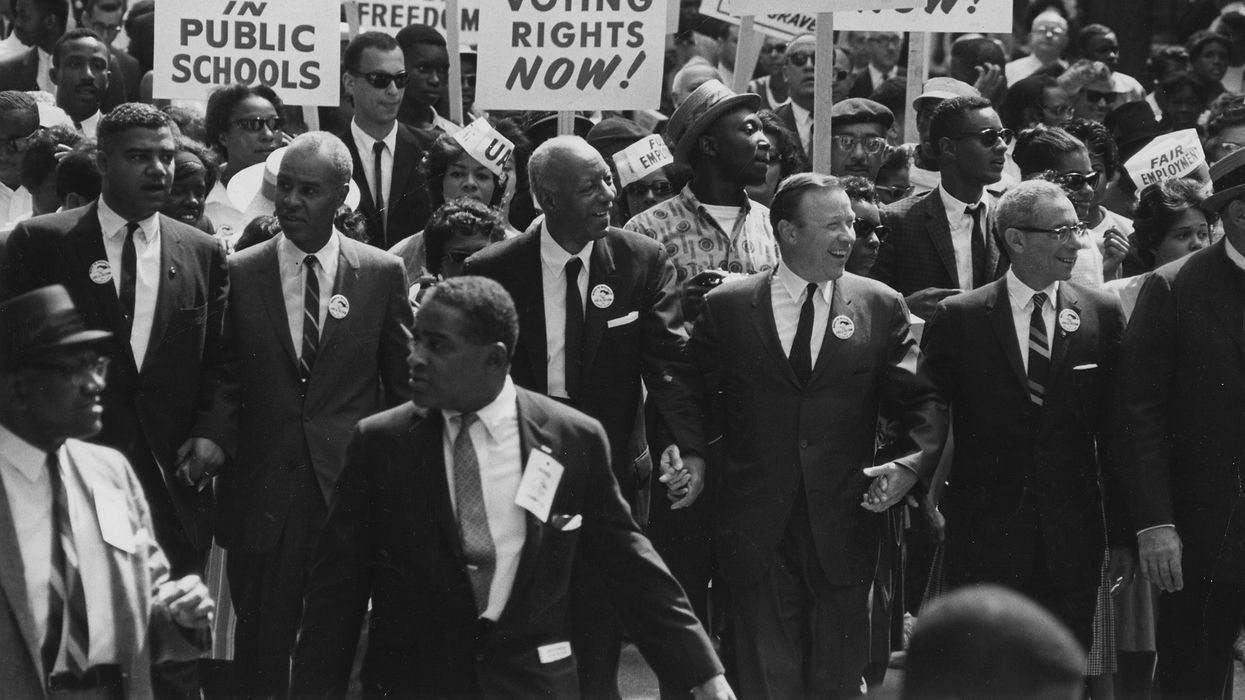Protecting the Dream by Fighting Back Against the Racist ‘DEI Hire’ Slur
This term has become a dog whistle for those who wish to diminish the accomplishments of Black women like VP Kamala Harris, wrongly suggesting that they are unqualified for their well-earned positions.
August 28, 1963 marks one of the most significant events in our nation’s history. On that day, more than a quarter million people assembled to participate in the historic “March on Washington for Jobs and Freedom,” where Reverend Dr. Martin Luther King Jr. delivered his iconic “I Have a Dream” speech and demanded the civil and economic rights of Black Americans that were promised in the founding documents of this nation. That call to action, shared by many gathered in the nation’s capital, is one that still reverberates today.
The origins of this march trace back over two decades to 1941, when labor organizer A. Philip Randolph, along with activist Bayard Rustin, created the March on Washington Movement, which was designed to place pressure on the federal government to establish employment protections for Black people. Randolph and Rustin were both motivated to end segregation and racial discrimination that denied Black Americans fair opportunities in employment. Randolph eventually became the director of the March on Washington for Jobs and Freedom, while Rustin became one of the central organizers of the 1963 march. Through their efforts, Randolph, Rustin, and many others brought people from all over the nation to Washington, D.C., to use their collective power to foster lasting change. The impact of the March on Washington contributed to the eventual signing of the Civil Rights Act the following year.
While this may be well-known—and for some, distant—history, some of the same social ills that the marchers sought to eliminate are still with us with renewed intensity. And the progress and equality they have fought for is once again under attack, this time by conservative organizations who are using hard-fought civil rights laws and anti-discrimination legislation against the very people these laws were designed to protect.
On August 28, 2024, I share this pledge once again with our nation, with the hope that we as a society will continue to uphold this promise and stand against that which threatens diversity, equity, and inclusion.
Our nation is once again fighting against a wave of race-based attacks against marginalized communities, this time under the guise of opposing Diversity, Equity, and Inclusion (DEI) efforts. So far this year, at least 37 federal lawsuits targeting DEI programming have been filed. The year before that, at least 65 bills were introduced to limit DEI in higher education across 25 states. This coordinated campaign aims to rid our nation of DEI offices and programs, end anti-bias trainings, and stop funding for the support for diversity. As studies have consistently shown, employers and educational institutions that emphasize and encourage diverse workforces and student bodies regularly outperform their counterparts among various measures.
Although many in this anti-DEI movement claim that racism no longer exists in our nation and thus nullifying the need for diversity, there is no denying the facts: Racial wealth divides persist, and people of color continue to endure systemic discrimination. Yet, some flatly reject the myriad data on the clear benefits of having diverse workforces and classrooms, and the pressure campaign launched by the conservative movement has caused many businesses to fold and abolish their DEI commitments and efforts completely.
And this movement is now becoming more blatant with its racist motivations, not only attacking universities and businesses, but also directly attacking people of color. We see it in the grotesque attacks on the first woman of color nominated for president, Vice President Kamala Harris, where right-wing activists have pejoratively labeled her as a “DEI hire.” This term has become a dog whistle for those who wish to diminish the accomplishments of Black women, wrongly suggesting that they are unqualified for their well-earned positions, and that but for their race and gender, they would not be where they are. Make no mistake: Right-wing organizations and activists are now using the term “DEI hire” as a slur to strip away the achievements of people of color who are in positions of power.
It is vital that we fight back against unfounded and dangerous attacks on DEI. Our nation cannot achieve the equality we hold as a moral imperative if we allow the progress we’ve made to be eroded. We can all look to the past as a road map to chart a better future where we fight for a nation–and world–free of discrimination and inequality. Following Dr. King’s speech, A. Philip Randolph invited those in attendance at the march to take a pledge:
Standing before the Lincoln Memorial on the 28th of August, in the centennial year of emancipation, I affirm my complete personal commitment to the struggle for jobs and freedom for Americans. To fulfill that commitment, I pledge that I will not relax until victory is won. I pledge that I will join and support all actions undertaken in good faith in accord with the time-honored Democratic tradition of nonviolent protest, of peaceful assembly, and petition, and of redress through the courts and the legislative process. I pledge to carry the message of the march to my friends and neighbors back home and arouse them to an equal commitment and equal effort. I will march and I will write letters. I will demonstrate and I will vote. I will work to make sure that my voice and those of my brothers ring clear and determine from every corner of our land. I pledge my heart and my mind and my body unequivocally and without regard to personal sacrifice, to the achievement of social peace through social justice.
As we commemorate the March on Washington, let us reflect on the past so that it emboldens us to fight for the future. And so, on August 28, 2024, I share this pledge once again with our nation, with the hope that we as a society will continue to uphold this promise and stand against that which threatens diversity, equity, and inclusion. It is up to us to ensure that the progress made by those who marched is not undone by those who seek to divide us, and that the labor and freedoms of all Americans remain protected.


